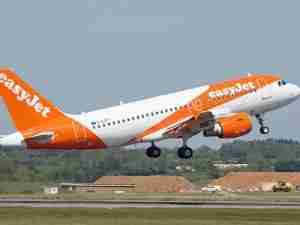Boeing Takes First Step Into Iran Months After Airbus Bonanza
By: | Apr 11 2016 at 04:09 PM | Air Cargo
Boeing Co. held its first talks with Iranian airlines in the country’s post-sanctions era during a three-day visit to Tehran, vying to enter one of the few remaining untapped aviation markets three months after Airbus Group SE’s $27 billion haul.
During the trip concluded Monday, Boeing executives provided a closer look at the company’s 737, 777, 787 jetliners, Iranian Airlines Association Secretary Maghsoud Samani said by telephone from Tehran. The planemaker also discussed financing methods and maintenance for aging Boeing models that have been in service in Iran for years, said Samani, who was among the attendees.
“Boeing has promised to put support of its existing aircraft operating in Iran on the agenda,” Samani said. Future meetings with the company will be held in the country, he said. “Hopefully the cooperation will take place and conditions to purchase planes from Boeing will also be ripe.”
Boeing faces risks and uncertain rewards as it vies with Airbus and others to replace Iran’s museum-vintage fleet. There’s the prospect of political backlash, given Iranian hard-liners’ penchant for anti-U.S. rhetoric and their attempt to prevent any American influence in the country. Boeing may also need to leave some wiggle room to back out of any deals for potential orders if the next U.S. president decides to reinstate sanctions.
‘Closely Coordinated’
Boeing “closely coordinated” the meetings with the U.S. government, John Dern, a spokesman for the company, said in an e-mailed statement. Any sales agreements would be contingent on U.S. government approval.
The sessions “enabled us to better understand the status of their current fleets, their route structures, and their plans for future operations,” Dern said. “We discussed the support we provide to operators of Boeing commercial airplanes as well as passenger airplane payloads, range, cabin configurations, fuel economy, and flight deck systems.”
The planemaker, which was cleared by the U.S. government in February to hold talks with approved Iranian carriers, requires a separate license to complete any commercial jet sales. Europe’s Airbus, which faced fewer restrictions, grabbed an early lead in January with a $27 billion order announced on the day nuclear sanctions were eased.
While European aerospace rivals began scoping out potential sales last year, Boeing wasn’t allowed to veer beyond safety-related items such as the aircraft maintenance manuals it sold to Iran Air Tours.
Boeing Lag
Boeing also skipped a January aviation gathering in Tehran and caused Iran Air Chairman Farhad Parvaresh to suggest that the company was “lagging behind a bit.” The planemaker said it was following a licensing process outlined by the U.S. government.
While Iran has yet to finalize the January agreement with Airbus for 45 single-aisle A320s and 73 wide-body aircraft including A330, A350 and A380, the country sees room for more than one major manufacturer, Samani said.
“Given the aviation needs that our country has—for some 550 aircraft based on research—there is a good setting for negotiations and plane purchases,” he said. “Any company is trying to get a share of the market and given the under-served territory that exists post-sanctions, I hope interests of both sides are met.”










